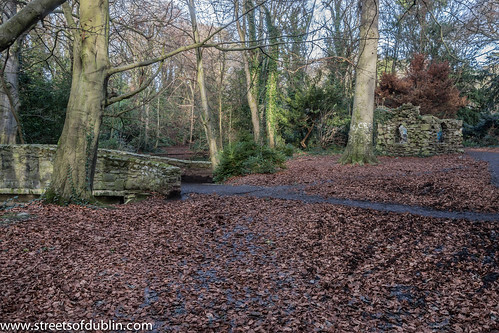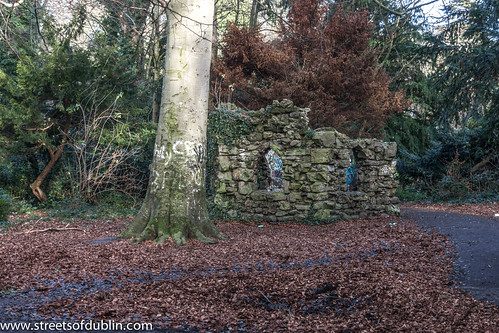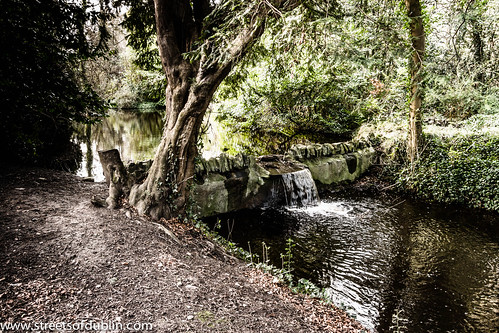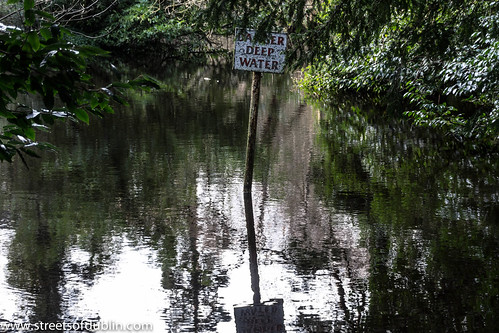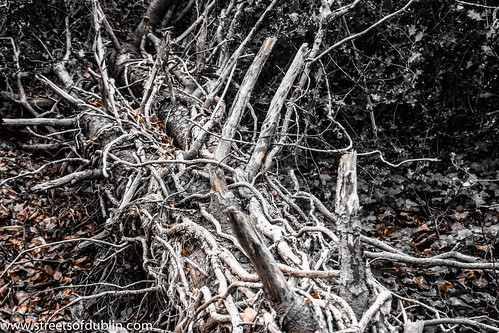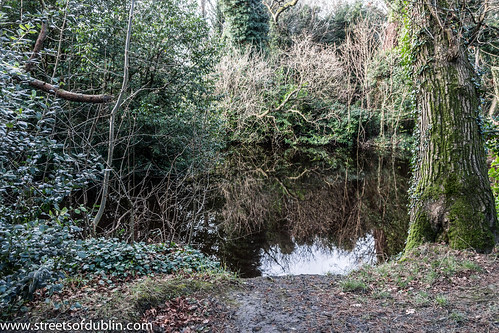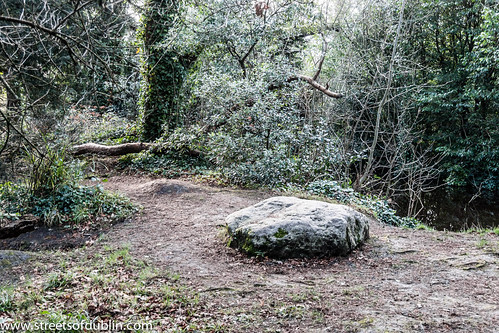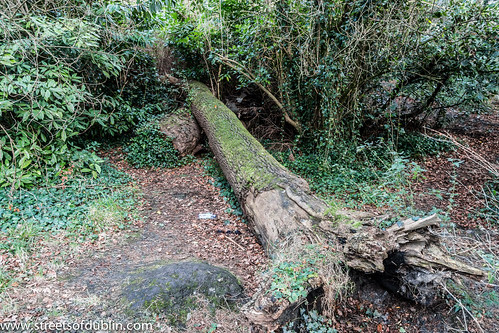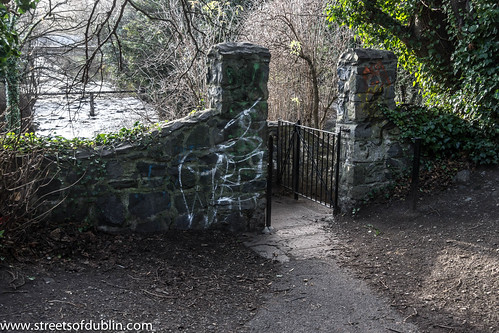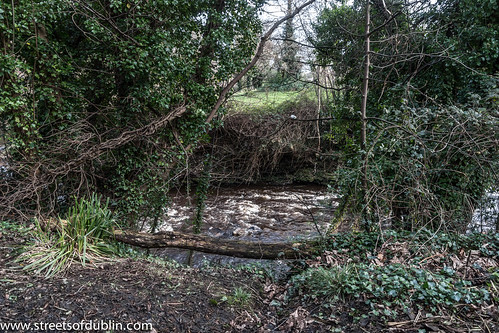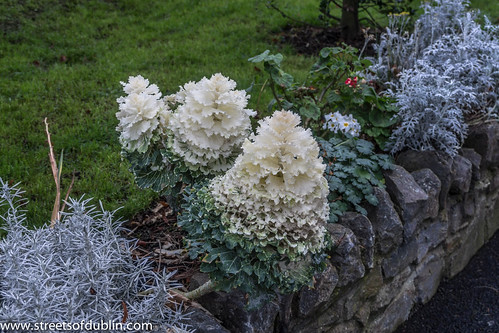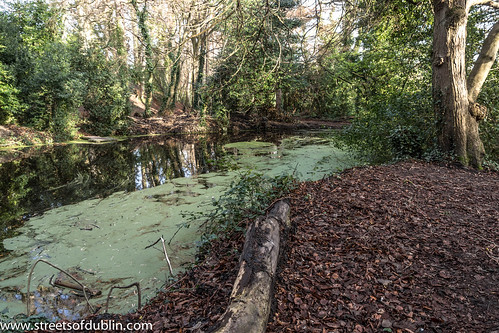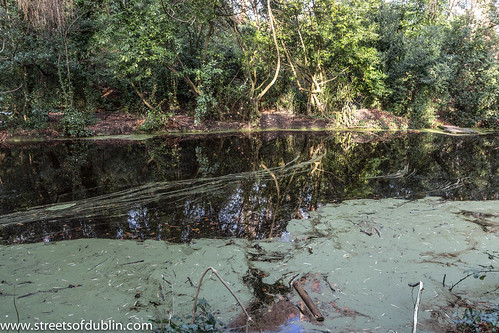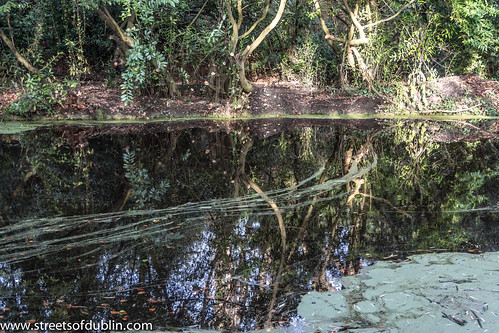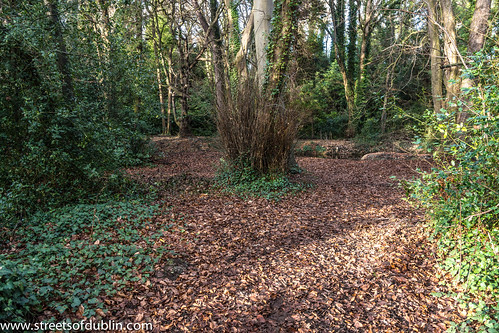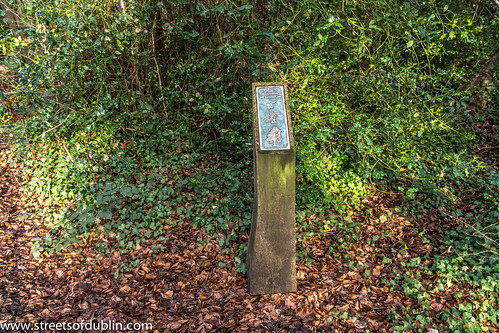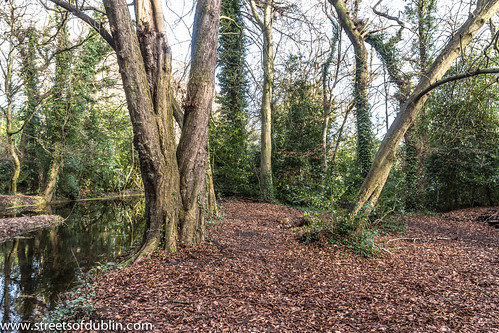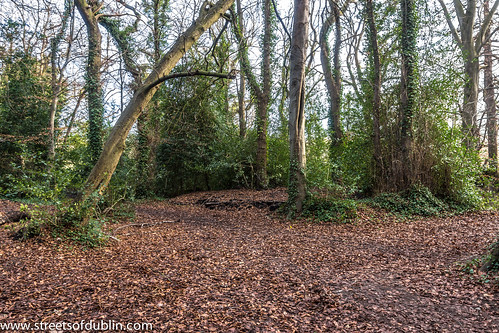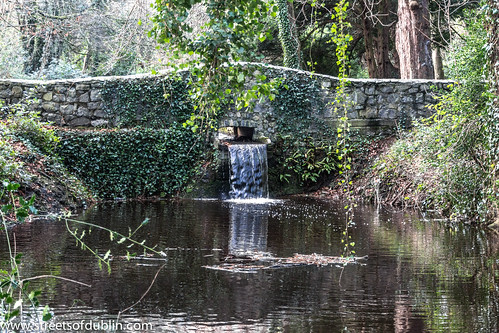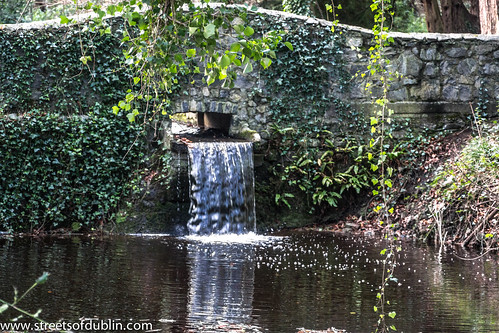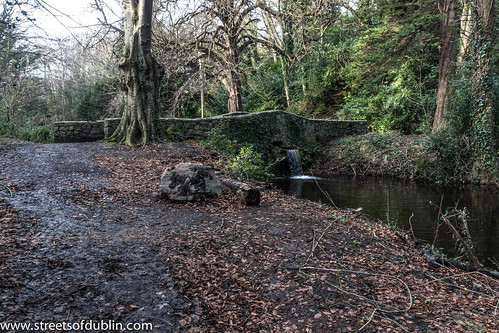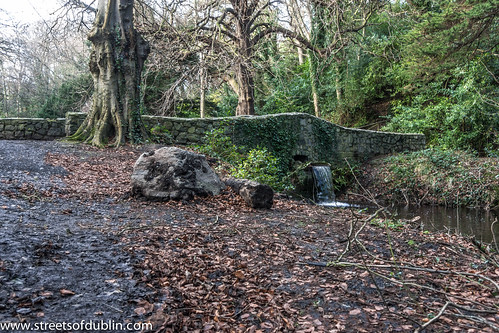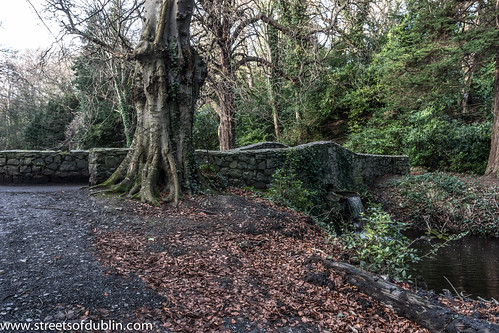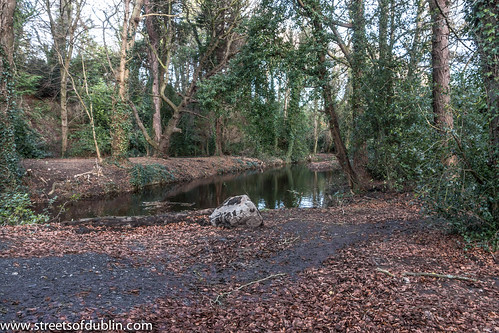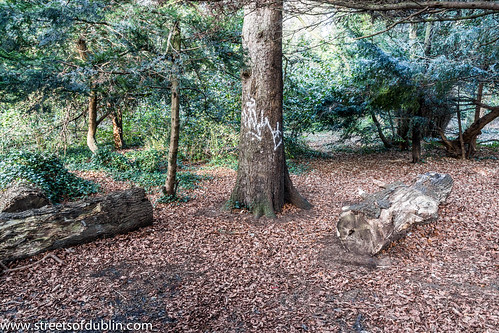
Bushy Park is a large public park in Rathfarnham, Dublin (Ireland), a photo by infomatique on Flickr.
Bushy Park is a large public park in Rathfarnham, Dublin in Ireland.
Bushy Park is a natural oasis. The river Dodder flows peacefully through the park. It's flora attracts a lot of squirrels, foxes and birds. It has numerous football pitches for soccer, rugby union and gaelic football, a large tennis court, children's playground and a skatepark. It is the home ground for Bush Park Rangers FC.
In the centre of the park there is a large hill. Here there is a constant stream of kids freewheeling, running, waddling and falling down the path. Although you might remember it as being massive, the hill itself is quite small. There is also a bandstand and duck pond in the middle of the park.
South of the duckpond is "The Shell House", the ruins of a small building that had been covered in shells.
The park was originally part of the Shaw family estate who were related to George Bernard Shaw. In the 1950's they donated the land to Dublin Corporation for use as a public park.
Bushy Park House is also one of the main attractions to Bushy Park. The house was originally owned by Arthur Bushe of Dangan, Co. Kilkenny, Secretary to the Revenue Commissioners who built the house in 1700. The house, at this time, was known as 'Bushes House', on a site of 4 hectares. A John Hobson became the owner in 1772 and changed the name of the house to Bushy Park, possibly after the park in London of that name.
Bushy Park House was then purchased by Abraham Wilkinson in 1791 who added almost 40 hectares to the estate. The house and estate were given as a dowry to his only child Maria, when she married Sir Robert Shaw (1774-1849), 1st Baronet, Member of Parliament and Lord Mayor of Dublin (1815-1816) in 1796.
Bushy Park House became the seat of Sir Robert Shaw when he left nearby Terenure House. The Shaw family was connected with Bushy Park until they sold the house and grounds to Dublin City Council (formerly Dublin Corporation) in 1953. The house and 8 hectares of the grounds were then sold by Dublin City Council to the Congregation of Religious Christian Education in 1955. Dublin City Council re-acquired 2 acres of woodland in 1992.
Bushy Park House is a three storey over basement Georgian house with a plain façade. In the early part of the 19th century the front of the house and the northern wing were rebuilt, with large ground floor windows and external shutters added. On the south side of the house were large enclosed gardens, and on the north side almost one hundred acres of parkland, extending as far as Terenure village. A long avenue led to the Rathfarnham Road while the original short avenue led to what is now Fortfield Road.

